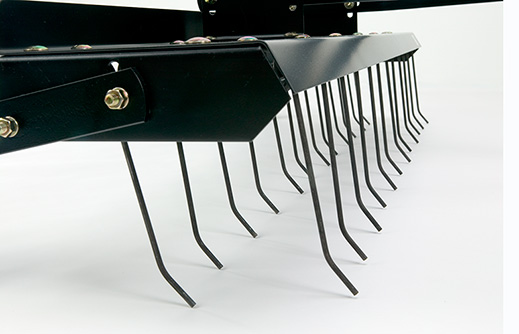Why Do I Need to Use a Lawn Dethatcher?
Thatch is made of up old grass clippings, dead roots, leaves and other small organic debris. It builds up in layers underneath your lawn, on top of the soil. A good lawn dethatcher will clear this layer away allowing water, nutrients, and air to reach the soil.
Take a small plug of your lawn from an inconspicuous area using a hand spade. If you see more than a half-inch of thatch, your lawn could really benefit from dethatching. Dethatching is accomplished easily by attaching a pull-behind unit to your lawn tractor or with an optional kit added to the front of your lawn sweeper.
When Do I Need to Use a Dethatcher?
Dethatch at least once a year in early spring to help prevent disease. A second dethatching in the fall helps maintain a healthy green lawn. Dethatch after watering or after a little rainfall since moist thatch is easier to remove. Don’t dethatch during the dry summer months because this could overexpose the roots; dethatching in spring insures maximum growth potential.
How Do I Use a Dethatcher?
Dethatching is most effective when the tines are not impeded by surface debris or soil clumps. For best results before dethatching, use a lawn roller to level out bumps and crevices. Mow grass and then remove large leaves and sticks using a lawn sweeper or vacuum.
After attaching the lawn dethatcher to your riding lawnmower, make two perpendicular passes – being sure to overlap each time. Sweep up loosened thatch with a rake or with a lawn sweeper or vacuum for large areas.

You can check out the latest Brinly lawn dethatchers here
Or, pick one up at your local Garden Center here
Author: Brad Turner


